
Transcription
RÉSUMÉ & COVER LETTERGUIDEJennifer Pickerell, ill Boehne, M.S.Assistant ndree.edu/careerservicesMcKendree University Career Services1
TABLE OF CONTENTSCareer Services’ Top Ten ListPage 3RésumésPage 4Designing a RésuméPage 5Résumé FormatsPage 8Basic Contents of a RésuméPage 9Alternative HeadingsPage 10How to List:- Name & Contact Information- An Objective or Profile/Summary- Education- Class Projects- Work Experience- Campus Activities & Volunteer ServicePage 11Page 12Page 14Page 15Page 16Page 20How to Pull It All TogetherPage 21Example RésumésPage 22Skills RésuméPage 38Experienced Candidate RésuméPage 39First Year Student RésuméPage 41Résumé ChecklistPage 42Reference PagePage 43Cover LettersPage 44Sending and Scanning Résumés and Cover LettersPage 472
CAREER SERVICES’ TOP 10 LIST1) Career Services Web Page - Career Services invites you to visit our web page for a wealth of information.The site includes job opportunities; Career Planning and Résumé/Cover Letter Guides for majors and jobs;online career assessment tools; a Calendar of Events page; a packet on how to Get Involved; links tovarious job resource sites on the Internet; sample interview questions; information on majors andgraduate schools; and various other resources. www.mckendree.edu/careerservices.2) Career Counseling & Testing - Students having difficulty choosing a major or minor field are encouragedto schedule an appointment with Career Services. Students are also welcome to complete onlineassessments on our website to further assist with the decision-making process.3) Résumé/Cover Letter Assistance - The Career Services staff assists students by checking résumés, coverletters, and other job search-related materials for proper grammar, format, and content.4) Full-time and Part-time Jobs – Paid internships and full-time/part-time opportunities can be accessedthrough our webpage by clicking on the “Job Opportunities” link and visiting the College Central NetworkSystem. Here, employers look at candidates for position vacancies with their organization, and they willsearch our online database for résumés. There is also a mentoring component to this system, which willallow you to network with alumni. A list of part-time job opportunities can also be accessed through the“Job Opportunities” link. For information regarding on-campus interviews, please view the Calendar ofEvents page and visit Career Services to register. Please see Financial Aid for more information regardingFederal Work Study positions.5) Graduate School Assistance - Our office can assist students with résumé writing, mock interviews, andpersonal statement reviews, and we can give you information on the various graduate admission examsthat may be required for you to enter graduate school.6) Mock Interview Sessions - Career Services offers you the opportunity to participate in these sessions sothat you are better prepared for interviews. We also have practice interview question handouts tofurther prepare you.7) Internship Program - Our internship program allows students who have junior and senior standing andmeet certain GPA requirements to apply classroom theory and knowledge in a company/organization.Students receive academic credit for the internship program, and must meet with Career Services to beginthe process. HIGHLY RECOMMENDED!8) Career Resource Center - This room is located next to our office, and contains books on résumé writing,cover letter writing, interviewing, the job search, and graduate school.9) Career Fairs - Career Services sponsors/co-sponsors several career fairs every year. Please go to ourCalendar of Events page for more information.10) Special Events and Other Services – Career Services sponsors various events each year, such as a CareerConference, Majors Fair, Career Carnival, class presentations, and drop-in sessions covering a variety oftopics. Our office teaches a one credit hour course titled Careers, the Job Search, and Beyond, andencourages juniors and seniors to enroll to become better prepared to find a position after graduationand succeed in living on your own.Opportunity Training Initiative Success3
RÉSUMÉSHere are the “Top 5 Reasons You Need a Résumé”:1. To initiate contact with a potential employer: Accompanied by a cover letter, yourrésumé lets an employer know that you’re interested in the company and helps create apositive first impression.2. To provide an employer with a summary of your education, experience, and skills:Your résumé shares information about you that qualifies you for the position you want.Be sure to focus on relevant information to put into your résumé.3. To facilitate an interview and serve as a guide during the interview: The résuméshould encourage the employer to call you for an interview to hear more. It alsoprovides a common base of knowledge shared by you and the interviewer, leadinghim/her to ask you to elaborate on information and allowing you to cite examples ofskills that would interest the employer.4. To share information with persons assisting you in the job search: Your résumé caninform others of your job search and can help you develop a network of references.Give copies of your résumé to people who write letters of recommendation for you aswell, so you can remind them of your specific qualities and accomplishments.5. To supplement information given when completing applications: Most applicationsrequest a great deal of information but allow little space to write or type. So be sure toanswer all questions on the application, but also attach your résumé to provide a morethorough picture of your skills and abilities.4
DESIGNING A RÉSUMÉYour résumé should outline your educational and employment experiences, your interests andactivities, and your goals. Briefly and concisely, your résumé should tell the employer: Who you are What you know What you have done What you would like to do What you can do for the employer* Remember that cover letters should always be sent with your résumé. You can see coverletter writing tips and examples later in this guide.There is no single prescribed format for résumés. Here are some basic rules, however, to followin designing an attractive and informative résumé: Select a format that best suits yourqualifications Generally, recent graduates should notexceed one page Minimize personal information Highlight skills and abilitiesMake your résumé easy to skim (don’tassume the employer will take time toread it completely) Include marketable, relevant data Know your audience Tailor résumé to specific qualifications Make sure to proofread! Review drafts with Career Services andothers in your field Use quality résumé paper, white or offwhite, and do not staple; you maypaperclip your résumé, though Make the résumé graphically pleasing Put your info. in order of interest toyour reader Make your résumé your own Be consistent with format Generally, margins are 1 inch from top,bottom, and sides5
Transferable Skills ChecklistOver the years, you have developed many skills from part-time/full-time positions, classes, campus activities,volunteerism, and other leadership experiences. A prospective employer wants to know about these transferableskills you have gained and how they can be applied in their specific work environment. Use the following checklistto help you pinpoint some of your transferable skills.Communication Skillsspeaking effectivelywriting clearly and conciselylistening attentively and objectivelyexpressing ideasfacilitating group discussioninterviewingeditingresponding appropriately to /- feedbackusing various media to present ideas imaginativelyproviding appropriate feedbacknegotiatingperceiving nonverbal messagespersuadingreporting informationdescribing feelingspublic speakingusing various styles of written communicationconveying a positive self-image to redictingcreating ideasidentifying problemsimagining alternativesidentifying resourcesgathering informationsolving problemssetting goalsextracting important informationanalyzingdeveloping evaluation strategiestesting validity of datadesigning an experiment or modelformulating questionsmaking conclusionsconceptualizingobserving and discoveringdefining needsHuman Relations/Interpersonaldeveloping rapportbeing sensitivelisteningconveying feelingsproviding support for othersmotivatingsharing credithelping otherscounselingcooperatingkeeping a group “on track”being patientinteracting effectively with peers, superiors, andsubordinatespersuading othersbeing willing to take risksteaching/instructing othersdemonstrating effective social behaviorperceiving feelings and situationsdelegating with respectWork Survivalimplementing decisionscooperatingenforcing policiesbeing punctualmanaging time and stressattending to detailworking effectively under pressuretaking initiative in job-related dutiesdiscerning appropriate behaviors for workmeeting goalsenlisting helpaccepting responsibilitysetting and meeting deadlinesorganizingmaking decisionsseeking opportunities for professional develop.evaluating personal and professional strengthsand weaknesses6
Organization/Management/Leadership/Decision Makinginitiating new ideas and taskshandling detailscoordinating taskscoaching/mentoringcounselingmanaging conflictmotivating and leading peopleorganizing people/tasks to achieve a specificgoalfollowing up with others to evaluate progressconducting meetingsgiving praise and credit to others for a job welldonesolving problems/mediatingtaking risksimplementing sound decisionsFinancial/Managementdeveloping a budget accurately estimatingexpenses and incomekeeping accurate and complete financial recordsaccountingassessingmanaging groupsdelegating responsibilityteaching/instructingpromoting changeselling ideas or productsmaking decisions with othersanalyzing tasksidentifying people who can contribute tosolutions of problems or tasksfacilitating brainstorming activitiesdeveloping goals for an organizationprioritizing tasksencouraging and inspiringnegotiating agreementstaking responsibility for decisionsensuring timelines of nginvestingCritical Thinking/Problem Solvinganticipating problems before they occurdefining problems and identifying possiblecausesidentifying possible solutions and selecting themost appropriate onescreating innovative solutions to complexProblemsinvolving group members to evaluate solutionsdeveloping plans to implement solutionsmulti-taskingidentifying a general principle that explainsinterrelated experiencesPutting your transferable skills to workList your skills that you consider your best transferable skills. Write an example of where and how you used b)6.a)b)7.a)b)7
RÉSUMÉ FORMATSThe four most commonly used résumé formats are the chronological, the functional/skills, thetargeted, and the combination résumé. Here’s a chart to help you determine which one is bestfor you:RESUME FORMATCHRONOLOGICALADVANTAGES Widely-used format Logical flow Easy to read Showcases growthin skills andresponsibility Easy to prepareFUNCTIONAL/SKILLS Emphasizes skills Organizes a varietyof experiences (work,volunteerism,activities, etc.) Disguises gaps inwork or short-termjobsTARGETED Personalized tocompany Shows research More impressive toemployer Written specificallyto employer’s needs Highlights relevantskills combined fromjobs and activities De-emphasizesemployment historyin less relevant jobs Minimizesemployment gaps andlack of relatedexperienceCOMBINATION/HYBRIDDISADVANTAGES Emphasizes gaps inemployment Not suitable for nowork experience Highlights frequentjob changes Does not emphasizeskill development Shows lack ofrelated experience Viewed withsuspicion byemployers due to lackof information aboutspecific employersand dates Time-consuming toprepare Confusing if notwell-organized Must be revised foreach employer Confusing if notwell-organized De-emphasizes jobtasks andresponsibilities Requires moreeffort and creativityto prepare8BEST USED BY Individuals withsteady work record Individuals with noprevious employmentor job changers Individuals with gapsin employment Individuals whohave developed skillsfrom areas other thanwork experiences Everyone – becauseany of the otherformats can be madeinto a targetedrésumé Career changers orthose in transition Individuals reentering job market Individuals who’vegrown in skills andresponsibility Individuals pursuingsame or similar workas they’ve had in past
BASIC CONTENTS OF A RÉSUMÉNAMEPermanent Address & City/State/ZipPhoneE-mail addressOBJECTIVE (or PROFILE if also creating bulleted statements)Concise description of position desired. Tailor your objective to each employer you target andevery position you seek. Another choice is to use a section titled Profile, which starts with the objective butincludes bulleted statements beneath it that summarize your skills, with examples thatback-up the stated skills.EDUCATIONTitle of Degree and Major FieldMinor(s) if applicableName of Institution, City, StateDate of Graduation, GPA/scale (if higher than a 3.0) Your most recent educational information is listed first and is followed by otheruniversities from which you have graduated/transferred from where you were involvedwith activities. Leave off high school information after your sophomore year of college. List Latin honors after graduation, if applicable.HONORS/AWARDSThese can include University awards/honors as well as community recognition.EXPERIENCEFull-time, part-time, summer work, volunteer work, self-employment, and internships can all beincluded. Write in order, starting from the most recent to the oldest. You want tocommunicate previous work experience that shows the knowledge, skills, and accomplishmentsrelevant to the position for which you are applying, if at all possible. Quantify and qualify asmuch as possible! Do not begin with phrases such as “Responsible for” or “Duties include.”ACTIVITIES & VOLUNTEER SERVICEThis would include participation in school and community activities and service. Various others headings could be beneficial, so see Career Services for guidance.9
OTHER HEADINGSAcademic HonorsActivitiesAffiliationsAreas of ExpertiseAwardsCareer ObjectiveCertificatesCivic ActivitiesCivic ContributionsCoaching InterestsCoaching SkillsCommittee AssignmentsCommunity Involvement (or Activities)Community ServiceComputer LiteracyComputer hibitsExperienceExtracurricular InterestsField ExperienceGroups MembershipsHighlighted AchievementsHonorary SocietiesHonors and AwardsInternational ExperienceInternship ExperienceLanguage AbilityLanguage CompetenciesLanguagesLicensesMilitary ServiceObjectiveOther ExperiencesOther Work ExperienceOverseas StudyPosition DesiredPracticum ExperiencePresentationsProfessional ExperienceProfessional LeadershipProfessional MembershipsProfessional ObjectiveProfessional SeminarsProfessional SocietiesProfilePublicationsRelated CourseworkRelevant ExperienceScholarshipsSelected SkillsSeminar PresentationsServiceShowsSkillsSkills & CompetenciesSpecial TrainingTeaching SkillsTechnical SkillsTrainingVolunteer ActivitiesWorkshops Attended*Skills résumés could include such headings as Supervision,Public Relations, Management Skills, Sales, CommunicationAbilities, Teamwork Skills, Writing Skills, Leadership Ability, andMotivational Skills.10
HOW TO LIST:NAME & CONTACT INFORMATIONIn general, list your basic information for your résumé in the following way:NameStreetCity/State/Zip CodePhone NumberE-mail AddressA few tips to remember when you list this information: You can either center or left-align the information. Take the underline off of your e-mail address and make sure the type is black, not blue(since many computers are defaulted to set a hyperlink). Be sure that the message on your voicemail or answering machine is professional andappropriate. Make certain that you have an appropriate e-mail address, and remember that yourMcKendree e-mail address will be cancelled approximately 90 days after graduation.Here is an example of a Name and Contact Information section:John C. Doe123 Unknown StreetNowhere, Illinois 65432(987) 654-3210jcdoe@mckendree.eduGIVE IT A TRY:11
HOW TO LIST:AN OBJECTIVE OR A PROFILE/SUMMARYOBJECTIVEThe objective statement appears at the top of a résumé and tells the reader about your careergoals and/or interest in a specific job or vacancy. You may consider tailoring your objective oneach résumé to every position for which you apply.Here are some tips for writing effective objectives: Be specific and focused. State your career interests and qualifications, which should be reflected throughoutyour résumé, cover letter, and interview. Use action-oriented words and concise phrases. Avoid using first-person pronouns, such as “I” and “me.” Tell the employer what you can contribute to the organization, not what you want outof the job. Do not include more than one occupational field of interest. Instead, create severalrésumés, each with a different objective. Well-written, effective objectives should include several of the following:o Type of position (e.g. management trainee, sales representative, nurse)o Type of field (e.g. public affairs, arts, finance, health)o Type of industry (e.g. communications, social services, government)o Type of organization (e.g. small vs. large, urban vs. rural, public vs. private)o Functional skills (e.g. public speaking, leadership, organizational, supervisory)Examples of high-quality objectives: For a Business Major: To enter a management training program where proven decisionmaking and teamwork skills can be used to improve organizational productivity. For an Accounting/CSI Major: A position in data analysis where skills in mathematics,computer programming, and deductive reasoning will contribute to a company’s goals. For a Communications/English Major: A public relations position in a non-profit organizationeager to benefit from experience in event planning, editing, and writing. For a Fine Arts Major: To apply technical, musical, and graphic design abilities, acquiredthrough classroom and internship experiences, in an advertising agency.GIVE IT A TRY:12
PROFILE/SUMMARYMany job-seekers are using a “Profile” or “Summary” section in place of an “Objective.”Because employers may initially spend only 10-30 seconds looking at your résumé, you want tograb their attention and highlight the most important and relevant information on your résumé(without repeating your résumé).With this section, it is common to first list the objective, and then to add bulleted statementsunderneath it to summarize your qualifications and skills. For each bulleted statement, youshould list skills with adjectives to describe yourself, and then add examples that back up thestated skills.Here are two examples of a Profile or Summary section:Driven individual with strong communication, leadership, and analytical skills seeking a positionin sales with a growth-oriented company. Hard worker with ability to manage several tasks at one. Work full-time while being afull-time student. Creative individual with strict attention to detail. Created a sales plan for a marketingclass that won an award. Excellent written and verbal communication skills and experience with a variety ofsoftware packages. Field experience with ABC Marketing Company. Solid negotiating skills. Member of University Debate Team.To obtain a position in the Accounting Department at ABC & Associates. Proven leader in group and work settings. Experience as a supervisor and active inStudent Government Association. Hard worker and very self-motivated. Created incentive program for departmentstaff members. Effective oral and written communication skills. Interact well with customers,supervisors, and colleagues. Strict attention to details. Internship with leading firm enhanced these skills. Computer skills in QuickBooks, Microsoft Dynamics GP, and Microsoft Excel.GIVE IT A TRY:13
HOW TO LIST:EDUCATIONYou want to emphasize the positive aspects of your academic career. List thecolleges/universities you have attended and earned a degree, listing the most recent degreefirst. Normally, high school is not mentioned once you are in the second semester of yoursophomore year of college.In general, list the following for your Education section: Degree expected – Check the formal title for your degree in the academic catalog, andspell out the proper names of the degree on your résumé. Expected graduation date – Just list the month and year; it’s not necessary to write theword “Anticipated” or “Expected.” Major, Minor, and/or Emphasis – List these parts under your degree to showspecifically what you’ve studied. City and state of school – List these to show where your school is located. GPA or other academic honors – Include your GPA if it’s 3.0 or above, listing it as3.0/4.0. You may also consider including your Major GPA if it is much higher than youroverall GPA. Add other academic honors here if you just have one or two, such asDean’s List. If you have more, add a section titled, “Honors,” to your résumé. Study Abroad – If you’ve had this experience, you could add it to your Educationsection.Here are some examples of ways to format an Education section:Bachelor of Arts in Speech Communication, Emphasis in Public RelationsMcKendree University; Lebanon, ILGPA: 3.5/4.0Dean’s ListMcKendree University, Lebanon, ILBachelor of Business Administration in Marketing, December 2012Minor in Organizational CommunicationMajor GPA: 3.26/4.00GIVE IT A TRY:14May 2012
HOW TO LIST:CLASS PROJECTSYour class projects can be relevant on a résumé, especially if you do not have a lot ofexperience from jobs/internships and leadership roles. When employers interview recentgraduates, they will take interest in your academic background.You can list your classes and bulleted statements below them, describing important classprojects that relate directly to the career field you are pursuing. Here is an example:CLASS PROJECTSBusiness and Professional Writing Developed and proposed business plan for simulated company. Conducted over 20 interviews to select three employees. Improved writing skills by composing office correspondence, reports, and financialstatements.GIVE IT A TRY:15
HOW TO LIST:WORK EXPERIENCEShowing that you have worked, even if it has been part-time, demonstrates that you havedeveloped transferrable skills and knowledge of the working world. Here are some tips forlisting your work experience: List your experiences in reverse chronological order. Include job title, place of employment, city and state of employer, and dates of employment. Describe each job in a way that clearly highlights the skills relevant to your career goals. Use short, concise statements set off with bullets and starting with action verbs. See theAction Verbs list on the following pages. Quantify whenever possible and use superlatives (e.g. most, best, etc.). Cite numbers and specifics whenever possible, showing results. Avoid using personal pronouns (e.g. “I,” “me,” etc.). Use a present-tense verb when describing a current position and a past-tense verb forcompleted jobs.Always describe your accomplishments and results, rather than just listing your job description.To do this, break down descriptive phrases into two areas—“What I Did” and“Results/Purpose.” While you cannot do this for every phrase, it will strengthen the meaning ofcertain bullet points. You can begin a phrase with either the “What I Did” part of the“Results/Purpose” part. Here are some examples:WHAT I DIDCreated, marketed, and executed programs RESULTS/PURPOSE to meet the needs of a diverse residentpopulation.Generated over 3,000 for Relay for Life by organizing fundraiser with residence hallstaff.Enforced campus policies to ensure a safe living and learningenvironment.Here is an example of how someone would transfer this into a résumé format:Resident AssistantFall 2011-Spring 2012McKendree University; Lebanon, Illinois Created, marketed, and executed programs to meet the needs of a diverse population. Generated over 3,000 for Relay for Life by organizing fundraiser with residence hall staff. Enforced campus policies to ensure a safe living and learning environment.16
GIVE IT A TRY:Title:Company/Organization:Location:Dates: Title:Company/Organization:Location:Dates: Title:Company/Organization:Location:Dates: 17
WHAT ARE SOME GOOD ACTION VERBS FOR BULLETED STATEMENTS?Use this list of action verbs to write your brief accomplishment descriptions on your résumé.Communication/People SkillsActed as a rviewedInvolvedJoinedComm., zedTrainedTranslatedWroteCreative nedDevelopedDirectedCreative, ecords nsed18Financial, duledSoldTabulatedTalliedTracedUpdatedHelping AssistedBroughtCared forClarifiedCoachedCollaboratedHelping, edTreatedVolunteeredManagement/Leadership dConceivedConsideredContractedControlled
Mgt., cruitedRectifiedReevaluatedReferredMgt., SuppliedTerminatedUnitedManual edRestoredRewiredTrimmedOrganizational/Clerical ditedEstimatedOrganiz., atizedUpdatedValidatedVerifiedResearch dSummarizedSurveyedSystematizedTestedWrotePlanning ifiedPlannedPreparedProducedSalvagedTeaching eaching, edInvitedLecturedMotivatedPersuadedRepresentedSet edUpdatedTechnical eplacedRestoredSolvedSpecializedStandardized
HOW TO LIST:CAMPUS ACTIVITIES & VOLUNTEER SERVICEJust like your relevant coursework, you can list your campus activities and volunteerism in oneof two ways.If you have simply been a member of campus organizations or a participant in
Apr 20, 2012 · 8) Career Resource Center - This room is located next to our office, and contains books on résumé writing, cover letter writing, interviewing, the job search, and graduate school. 9) Career Fairs - Career Services sponsors/co-sponsors several career fairs every year. Pleas

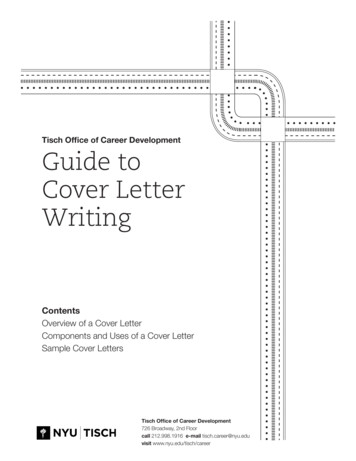


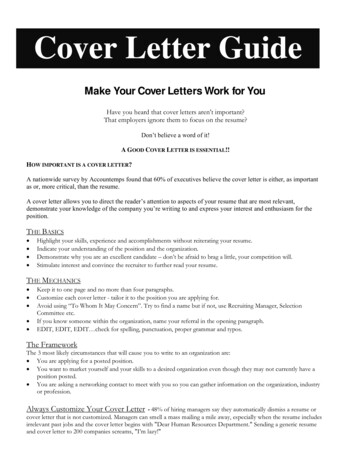
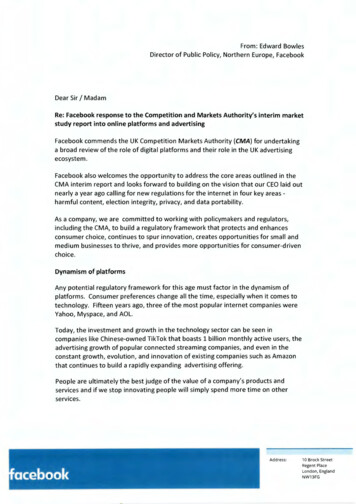
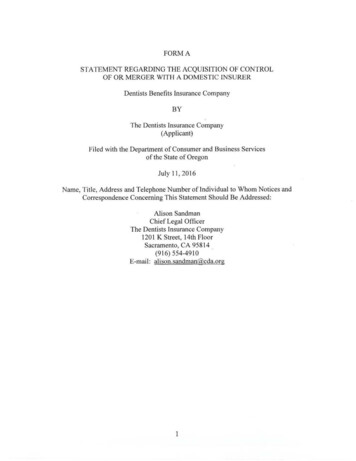
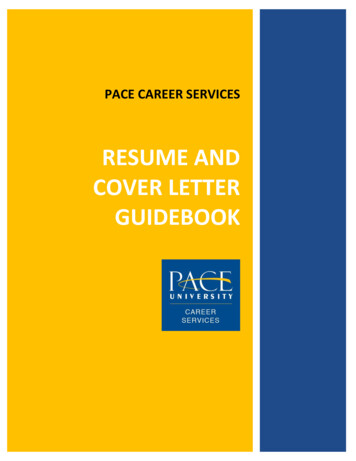

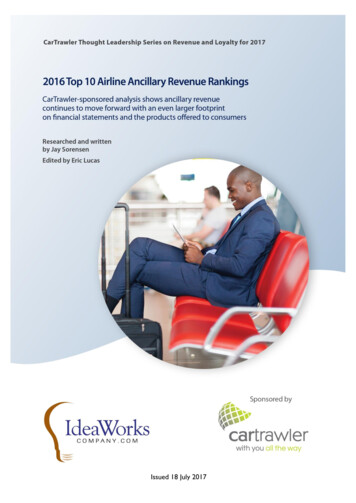

![[Page 1 – front cover] [Show cover CLEAN GET- AWAY 978-1 .](/img/13/9781984892973-6648.jpg)